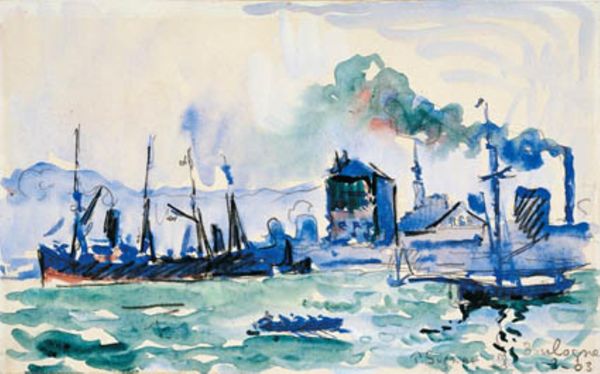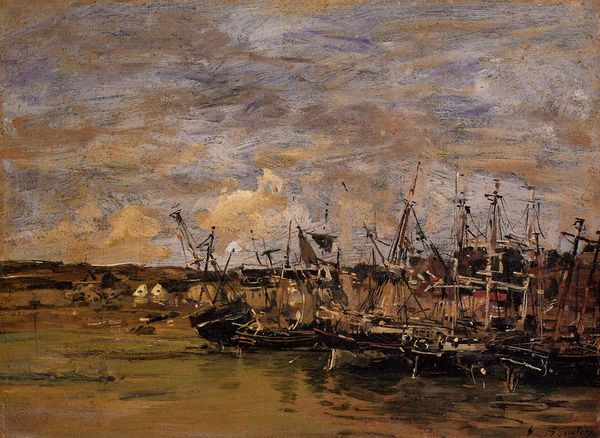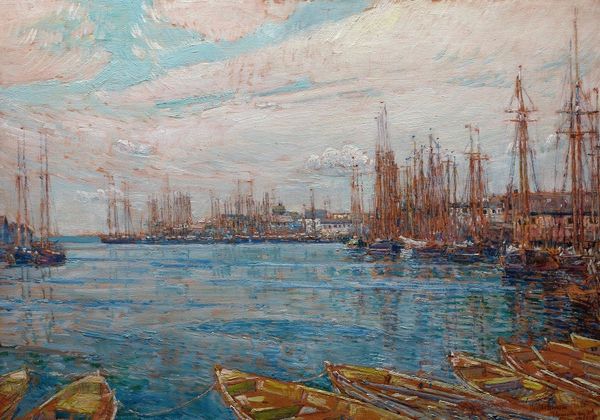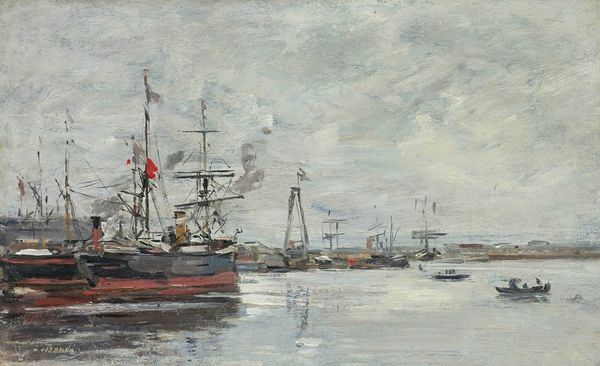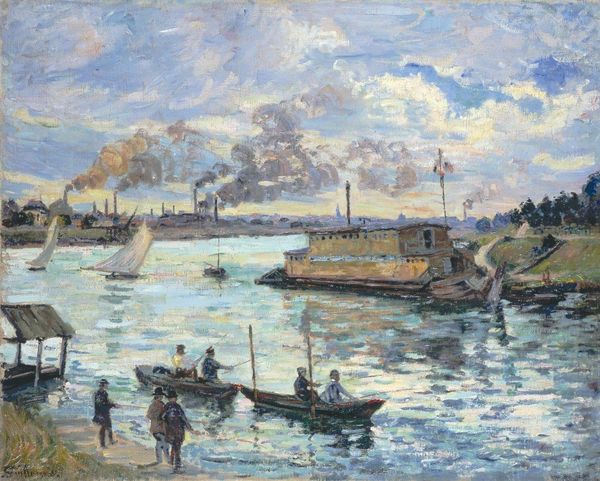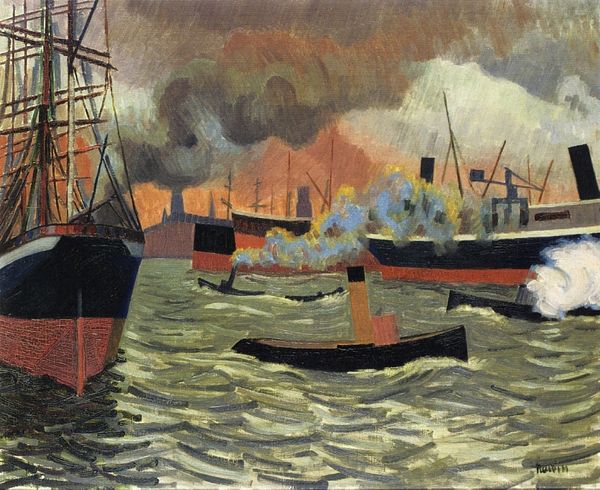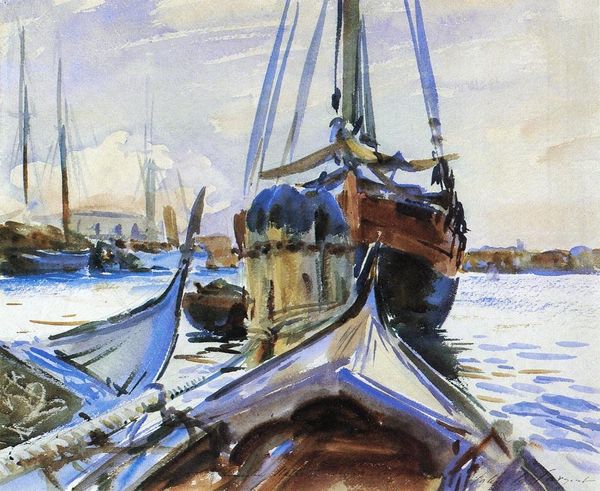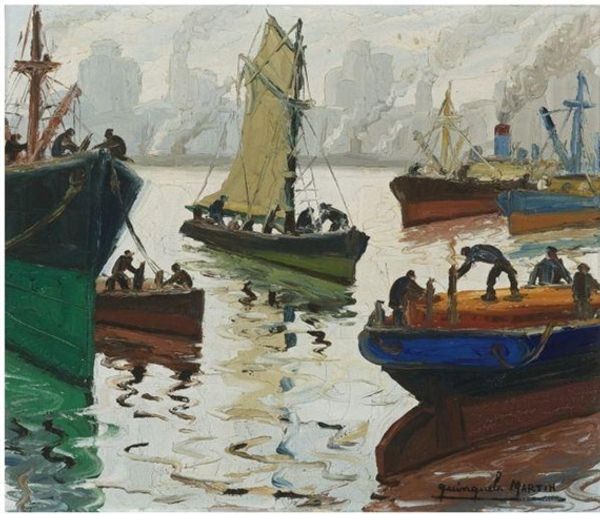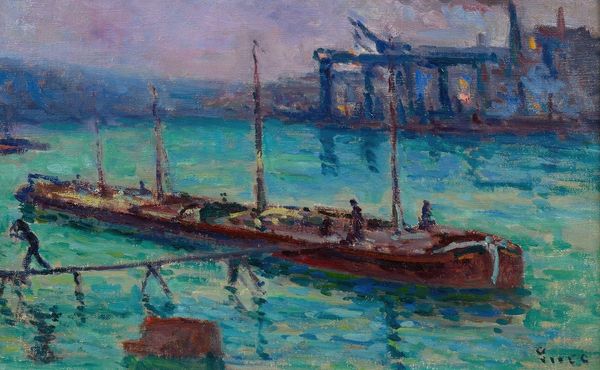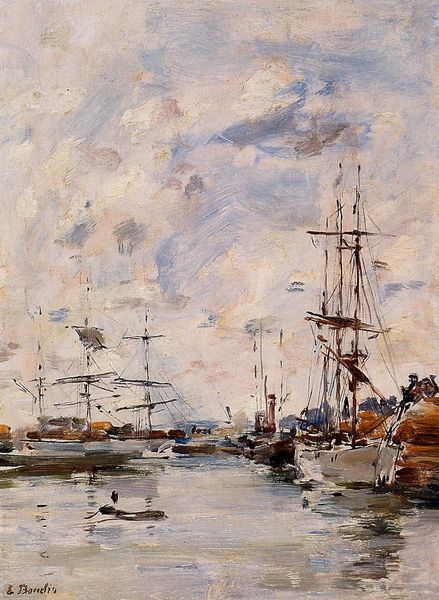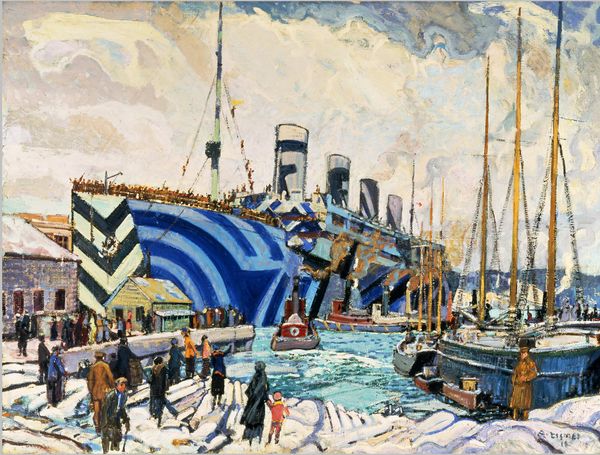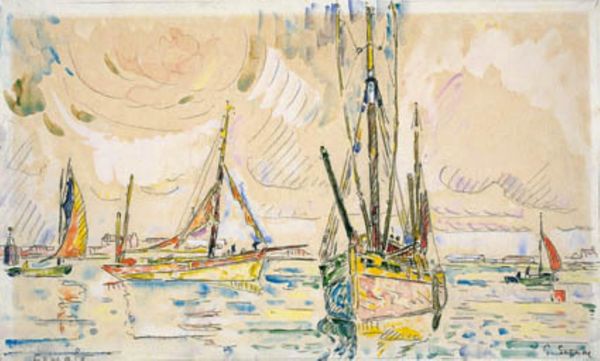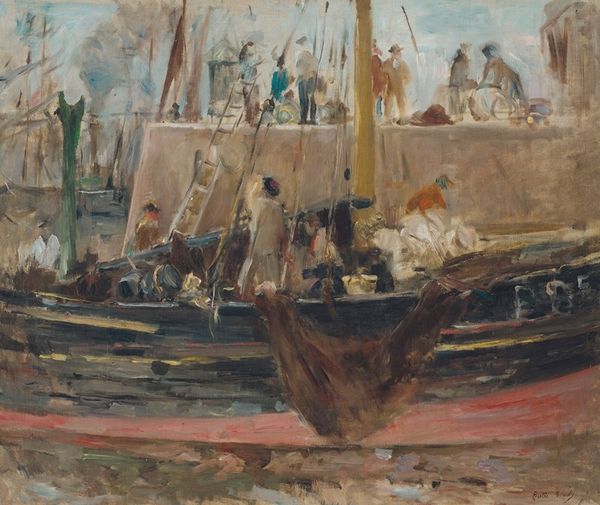
#
abstract expressionism
#
abstract painting
#
vehicle
#
impressionist landscape
#
possibly oil pastel
#
fluid art
#
neo expressionist
#
acrylic on canvas
#
paint stroke
#
painting art
#
expressionist
Copyright: Public domain US
Curator: Arthur Lismer’s “Convoy in Bedford Basin,” painted in 1919, offers us a window into a specific historical and social moment during the aftermath of World War I, currently housed at the Canadian War Museum. Editor: The painting immediately strikes me with its turbulent atmosphere. The dappled light and broken brushstrokes feel almost violent in their application, evoking the chaos of the scene and contrasting the seemingly stable nature of a harbor. Curator: Absolutely. It is worth knowing that Lismer worked as an Official War Artist during the period. The "dazzle camouflage" of these ships is fascinating, actually designed to distort perception rather than conceal. This choice reveals the crucial wartime contributions made by maritime laborers, predominantly women. This fact emphasizes women's changing societal roles and their integration into industries previously exclusive to men, challenging traditional gender norms and promoting broader discussions about identity and social change during conflict. Editor: The very presence of these "dazzle ships" demands consideration of their construction – the skilled labor of painting these disruptive patterns onto immense steel hulls. Reflecting on the vast amount of materials dedicated to a kind of mass deception shifts the dialogue away from national pride to material reality, highlighting both consumption and creation. Curator: It's fascinating how you highlight labor and materiality, bringing another dimension of the social context that may typically be overlooked! By showcasing how the construction and operation of these ships relied on both labor and resources, one cannot help but consider their effect on ecology. We have been discussing shifts in wartime gender dynamics as reflected in the context of naval operations, but might we also engage in dialogues surrounding environmental awareness, considering the far-reaching impacts of resource extraction? Editor: Precisely. It’s a portrait not just of the ships, but also a wider illustration that prompts the understanding that any representation carries immense amounts of information that exceed national or gender discussions. And by analyzing what makes an image function on the material level, new stories might surface. Curator: Indeed. Understanding the history, not just aesthetically but in a global, inclusive and material fashion, enhances the discourse about Arthur Lismer’s "Convoy in Bedford Basin" and prompts a broader understanding about how war affected and changed our society. Editor: By connecting the painted representation of war vessels with material, labor, and production-centered thinking, we start to ask necessary questions about consumption of raw resources and their cultural meaning.
Comments
No comments
Be the first to comment and join the conversation on the ultimate creative platform.
